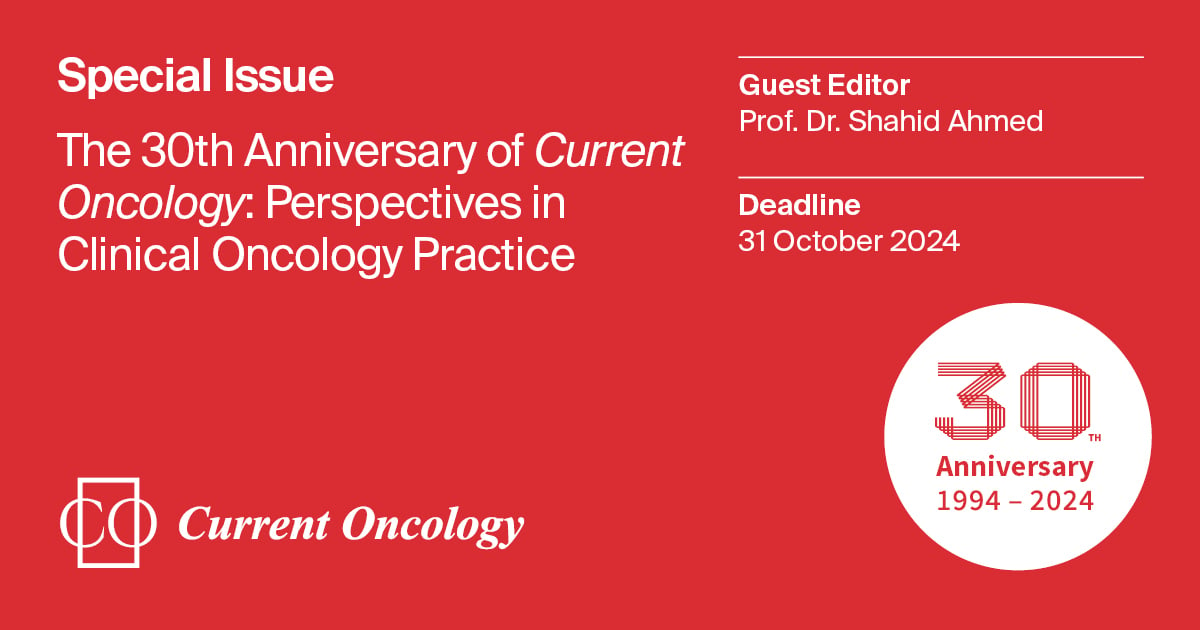The 30th Anniversary of Current Oncology: Perspectives in Clinical Oncology Practice
A special issue of Current Oncology (ISSN 1718-7729).
Deadline for manuscript submissions: 31 October 2024 | Viewed by 3934

Special Issue Editor
2. Saskatchewan Cancer Agency, Saskatoon Cancer Center, Saskatoon, SK S7N5H5, Canada
Interests: clinical trial; population health; breast cancer; gastrointestinal cancers
Special Issues, Collections and Topics in MDPI journals
Special Issue Information
Dear Colleagues,
The year 2024 marks the 30th anniversary of Current Oncology, a peer-reviewed open access journal on clinical oncology. To date, the journal has published more than 3,800 papers from more than 13,000 authors, from 98 countries. This milestone cannot be achieved without our readers, authors, peer reviewers, editors, and all the people working for the journal who have combined their tremendous efforts over the years.
To mark this important milestone, a Special Issue entitled “The 30th Anniversary of Current Oncology: Perspectives in Clinical Oncology Practice” is being launched. This Special Issue collects high-quality research articles and review papers on topics related to the latest developments in clinical oncology. We encourage all research groups to submit up-to-date and comprehensive reviews and research findings on this topic.
I look forward to hearing from you!
Prof. Dr. Shahid Ahmed
Guest Editor
Manuscript Submission Information
Manuscripts should be submitted online at www.mdpi.com by registering and logging in to this website. Once you are registered, click here to go to the submission form. Manuscripts can be submitted until the deadline. All submissions that pass pre-check are peer-reviewed. Accepted papers will be published continuously in the journal (as soon as accepted) and will be listed together on the special issue website. Research articles, review articles as well as short communications are invited. For planned papers, a title and short abstract (about 100 words) can be sent to the Editorial Office for announcement on this website.
Submitted manuscripts should not have been published previously, nor be under consideration for publication elsewhere (except conference proceedings papers). All manuscripts are thoroughly refereed through a single-blind peer-review process. A guide for authors and other relevant information for submission of manuscripts is available on the Instructions for Authors page. Current Oncology is an international peer-reviewed open access monthly journal published by MDPI.
Please visit the Instructions for Authors page before submitting a manuscript. The Article Processing Charge (APC) for publication in this open access journal is 2200 CHF (Swiss Francs). Submitted papers should be well formatted and use good English. Authors may use MDPI's English editing service prior to publication or during author revisions.
Keywords
- clinical oncology
- cancers
- clinical trials






